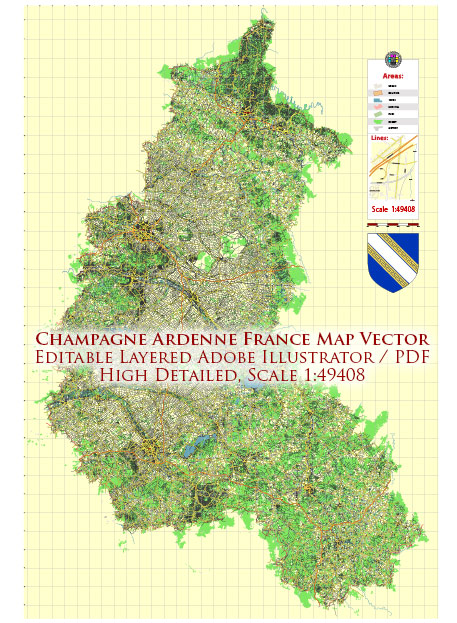Champagne-Ardenne is a historical region located in northeastern France, known for its rich history and diverse urban development. It is composed of four departments: Marne, Aube, Haute-Marne, and Ardennes. Here is a brief overview of the history of urban development in Champagne-Ardenne:
- Ancient and Roman Period: The region’s history can be traced back to ancient times, with evidence of Celtic and Gallo-Roman settlements. The Romans established various towns, such as Durocortorum (modern-day Reims) and Augustobona (modern-day Troyes). These towns were important centers of trade, administration, and culture in the region.
- Medieval Period: During the medieval period, Champagne-Ardenne experienced significant urban development. Several cities and towns, including Reims, Troyes, Châlons-en-Champagne, and Langres, grew as important centers of commerce and political power. The construction of cathedrals, such as the Notre-Dame de Reims, played a pivotal role in the architectural development of the region.
- Champagne Fairs: The Champagne Fairs (foires de Champagne) were an essential aspect of urban development during the Middle Ages. These fairs attracted merchants and traders from across Europe, contributing to the economic prosperity and cultural exchange in the region.
- Renaissance and Baroque: In the Renaissance and Baroque periods, urban development continued with a focus on art and architecture. The towns and cities in Champagne-Ardenne retained their historical charm, and many beautiful buildings, squares, and churches were constructed during this time.
- Industrialization: Like much of Europe, Champagne-Ardenne experienced significant industrialization during the 19th century. The growth of industries, such as textiles and manufacturing, led to the expansion of urban areas and the construction of modern infrastructure.
- World Wars: The region was heavily affected by both World War I and World War II. Cities like Reims, which had historic significance, suffered extensive damage during the wars. However, post-war reconstruction efforts helped restore many urban areas.
- Modern Development: In the post-World War II period, Champagne-Ardenne, like other regions of France, underwent urban planning and development to accommodate a growing population. New infrastructure, housing projects, and transportation networks were built to meet the changing needs of the population.
- Contemporary Urban Development: Today, Champagne-Ardenne’s cities and towns balance their historical heritage with modern amenities. The region is known for its cultural attractions, including museums, vineyards, and cultural festivals, which contribute to the ongoing development and vibrancy of urban life.
Champagne-Ardenne’s history of urban development is closely tied to its economic, cultural, and political significance over the centuries. The region’s cities and towns reflect the changing dynamics of French and European history, from ancient Roman times to the present day.


 Author: Kirill Shrayber, Ph.D.
Author: Kirill Shrayber, Ph.D.